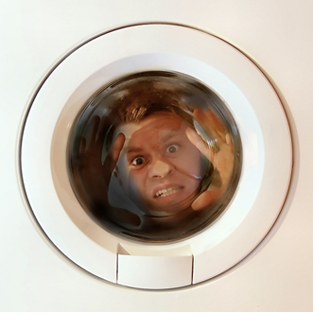
Stuck in Neutral: Brain Defect Traps Schizophrenics in Twilight Zone
August 17, 2014—People with schizophrenia struggle to turn goals into actions because brain structures governing desire and emotion are less active and fail to pass goal-directed messages to cortical regions affecting human decision-making, new research reveals.
Published in Biological Psychiatry, the finding by a University of Sydney research team is the first to illustrate the inability to initiate goal-directed behaviour common in people with schizophrenia.
The finding may explain why people with schizophrenia have difficulty achieving real-world goals such as making friends, completing education and finding employment.
"The apparent lack of motivation in schizophrenic patients isn't because they lack goals or don't enjoy rewards and pleasure," says the University of Sydney's Dr, Richard Morris, the study's lead author. "They enjoy as many experiences as other people, including food, movies and scenes of natural beauty.
"What appears to block them are specific brain deficits that prevent them from converting their desires and goals into choices and behaviour."
Using a control group research design, the researchers used a two-prong approach to reveal how and why schizophrenics fail to convert their preferences into congruent choices.
First, using a series of experiments involving choosing between different snack food rewards, experimenters revealed that:
- schizophrenic subjects had a liking for snack foods equivalent to healthy adults
- when researchers reduced the value of one of the snacks, both subjects and healthy adults subsequently preferred different snacks, as expected
- surprisingly, schizophrenic subjects had major difficulty choosing their preferred snack when provided with a choice between their preferred snack and the devalued snack.
Second, researchers used functional magnetic resonance imaging (fMRI) to measures brain activity while study subjects performed learning tasks involving snack foods. This technique relies on the fact that cerebral blood flow and neuronal activity are coupled.
When an area of the brain is in use, bloodflow to that region increases, thereby indicating neural activity. This neural activity can be presented graphically by colour-coding the strength of activation across the brain or in specific brain regions. The technique can localise neural activity to within millimetres.
Functional MRI results revealed the following:
- schizophrenic subjects had normal neural activity in the brain region responsible for decision-making (prefrontal cortex)
- among schizophrenic subjects, brain regions responsible, in part, for controlling actions and choice (the caudate) had far lower neural activity than in healthy subjects
- lower neural activity in the caudate regions was correlated with the difficulty that schizophrenic subjects' had applying their food preferences to obtain future snack foods.
"Pathology in the caudate and associated brain regions may prevent schizophrenic subjects from properly evaluating their desires then transmitting that information to guide their behavior," says Dr Morris.
"This means that desires and goals are intact in people with schizophrenia, however they have difficulty choosing the right course of action to achieve those goals.
"This failure to integrate desire with action means people with schizophrenia are stuck in limbo, wanting a normal life but unable to take the necessary steps to achieve it."
Schizophrenia affects one per cent of people worldwide, including in Australia. However so-called "poor motivation" in schizophrenia is a major economic concern because it is not treated by current medicines, and often means patients fail to finish their education or hold a full-time job.
DAN GAFFNEY
ARTICLE:
"Corticostriatal control of goal-directed action is impaired in schizophrenia," Richard W. Morris, Stephanie Quail, Kristi Griffiths, Melissa J. Green, Bernard W. Balleine. Biological Psychiatry. (In Press).
